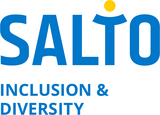Underpinning Principles: Intersectionality
Intersectionalism (or Intersectionality) has its roots in the North American Feminist Movement, and more specifically the Black Feminist Movement, of the 1990's.
The concept was first mooted by Kimberley Crenshaw and was later mainstreamed into female social justice discourse by Patricia Hill Collins as "an analysis claiming that systems of race, social class, gender, sexuality, ethnicity, nation, and age form mutually constructing features of social organization, which shape Black women's experiences and, in turn, are shaped by Black women".
(Collins, P. H. (2000). Black feminist thought: Knowledge, consciousness, and the politics of empowerment (2nd ed.). NY: Routledge.)
Essentially, in female social justice discourse, Intersectionalism empowers the individual to make sense of their own reality.
Intersectionalism is based on the premise that individuals have a complex mix of identities, such as religion, race, family, culture, socio-economic status, which influence the way they participate, and thus gender is just one (albeit important) part of the equation in terms of their empowerment and participation.
The action of "naming" these identities is in itself a key step in the empowerment process in that it leads to a greater understanding of the (positive and negative) impact that the multiple identities have on the individual's capacity to participate, on a basis of equality, at all levels of society.
Though initially devised as a tool for female situational analysis Intersectionalism can be applied across the gender spectrum.
Intersectionalism =
The complex mix of identities which influence
the way an individual participates
at all, or any, level of society.
In "Intersectionality: an approach to empower women at the crossroads" (2008) Bello, B, G., discusses Kimberley Crenshaw's conceptualisation of intersectionalism, its relevance to the empowerment process of women, its emergence within European legislation and the impact that said legislation might have on NGO policy and practice:
^^ top ^^
The traffic intersection metaphor
This [Krenshaw's] notion can be easily understood through the effective "Traffic Intersection Metaphor" which she developed.
In this metaphor, race, gender, class and other categories are the roads that determine the social, economic or political empowered or disempowered position of each person in the society. The overlapping of two or more of these avenues generates complex intersections, at the crossroads of which marginalised groups of women are located because of their specific intersectional identities.
In this case women "must negotiate the traffic that flows through these intersections to avoid injury and to obtain resources for the normal activities of life.
This can be dangerous when the traffic flows simultaneously from many directions. Injuries are sometimes created when the impact from one direction throws victims into the path of oncoming traffic, while on other occasions, injuries occur from simultaneous collisions.
These are the contexts in which intersectional injuries occur - when multiple disadvantages or collisions interact to create a distinct and compound dimension of disempowerment".
The intersectional approach helps us understand how the convergence of multiple factors in women's lives takes place and, more specifically, how racism, sex, patriarchy, class and other grounds contribute to create layers of inequality that structures the positions of human beings.
The intersectional self can be used to describe each person as a dynamic combination of categories (sex, race, class, ethnicity, religion, age, health, language, economic and social status, affiliations, and education).
^^ top ^^
Intersectionality in the European context:
It has been increasingly recognised since 2000 that different grounds may interact in a context in which there is a conflict of rights or in a way in which there is multiple disadvantage.
In addition to Recital 14 of the Race Directive (2000/43/EC), which recognizes that "women are often the victims of multiple discrimination", the European Parliament has made efforts to foster minority women's inclusion addressing, in particular, the situation of migrant women, Roma women and disabled women.
The enhancement of migrant women, of females with a background in migration and of females belonging to an ethnic minority is also one of the priorities within the "Roadmap to equality between women and men 2006/2010".
Impact at local level:
Assuming that women's personal self is no longer unanimously conceived as "unitary, stable and transparent" has a direct consequence on the work of NGOs. There now exist a need to take into consideration the overlapping aspects of complex identity when planning activities, services or projects for "minority women".
For example, projects aiming at empowering women to accessopportunities,fundamental rights, and resources might not affectall women in thesame way.
Meaning that what empowers "white middle class women" does not necessarily work to foster emancipation of marginalised, excluded women from minorities.
In addition, NGOs must recognise that marginalised minority women runmultiple risks if they challenge practices and statements of their cultures and traditions:
the risk of being excluded both from their own community because of their rebellion and, at the same time, from the majority society because of their membership of a discriminated minority group.
For "how to do" intersectionality see the Google Self activity in toolbox. Click here.
^^ top ^^
 Intersectionality
Intersectionality
